第86章
The attention of the settlers was formerly devoted almost entirely to the collection of the spontaneous produce of the forests and rivers; agriculture was consequently neglected, and now the neighbourhood does not produce even mandioca-meal sufficient for its own consumption.Many of the most necessary articles of food, besides all luxuries, come from Portugal, England, and North America.A few bullocks are brought now and then from Obydos, 500 miles off, the nearest place where cattle are reared in any numbers, and these furnish at long intervals a supply of fresh beef, but this is generally monopolised by the families of government officials.Fowls, eggs, fresh fish, turtles, vegetables, and fruit were excessively scarce and dear in 1859, when I again visited the place; for instance, six or seven shillings were asked for a poor lean fowl, and eggs were twopence-halfpenny a piece.In fact, the neighbourhood produces scarcely anything; the provincial government is supplied with the greater part of its funds from the treasury of Para; its revenue, which amounts to about fifty contos of reis (?600), derived from export taxes on the produce of the entire province, not sufficing for more than about one-fifth of its expenditure.
The population of the province of the Amazons, according to a census taken in 1858, is 55,000 souls; the municipal district of Barra, which comprises a large area around the capital, containing only 4500 inhabitants.For the government, however, of this small number of people, an immense staff of officials is gathered together in the capital, and, notwithstanding the endless number of trivial formalities which Brazilians employ in every small detail of administration, these have nothing to do the greater part of their time.None of the people who flocked to Barra on the establishment of the new government seemed to care about the cultivation of the soil and the raising of food, although these would have been most profitable speculations.The class of Portuguese who emigrate to Brazil seem to prefer petty trading to the honourable pursuit of agriculture.If the English are a nation of shopkeepers, what are we to say of the Portuguese? I counted in Barra one store for every five dwelling-houses.These stores, or tavernas, have often not more than fifty pounds' worth of goods for their whole stock, and the Portuguese owners, big lusty fellows, stand all day behind their dirty counters for the sake of selling a few coppers' worth of liquors, or small wares.These men all give the same excuse for not applying themselves to agriculture, namely, that no hands can be obtained to work on the soil.Nothing can be done with Indians;indeed, they are fast leaving the neighbourhood altogether, and the importation of negro slaves, in the present praiseworthy temper of the Brazilian mind, is out of the question.The problem, how to obtain a labouring class for a new and tropical country, without slavery, has to be solved before this glorious region can become what its delightful climate and exuberant fertility fit it for--the abode of a numerous, civilised, and happy people.
I found at Barra my companion, Mr.Wallace, who, since our joint Tocantins expedition, had been exploring, partly with his brother, lately arrived from England, the northeastern coast of Marajo, the river Capim (a branch of the Guama, near Para), Monte Alegre, and Santarem.He had passed us by night below Serpa, on his way to Barra, and so had arrived about three weeks before me.
Besides ourselves, there were half-a-dozen other foreigners here congregated--Englishmen, Germans, and Americans; one of them a Natural History collector, the rest traders on the rivers.In the pleasant society of these, and of the family of Senor Henriques, we passed a delightful time; the miseries of our long river voyages were soon forgotten, and in two or three weeks we began to talk of further explorations.
Meantime we had almost daily rambles in the neighbouring forest.
The whole surface of the land down to the water's edge is covered by the uniform dark-green rolling forest, the caa-apoam (convex woods) of the Indians, characteristic of the Rio Negro.This clothes also the extensive areas of lowland, which are flooded by the river in the rainy season.The olive-brown tinge of the water seems to be derived from the saturation in it of the dark green foliage during these annual inundations.The great contrast in form and colour between the forest of the Rio Negro and those of the Amazons arises from the predominance in each of different families of plants.On the main river, palms of twenty or thirty different species form a great proportion of the mass of trees, while on the Rio Negro, they play a very subordinate part.The characteristic kind in the latter region is the Jara (Leopoldinia pulchra), a species not found on the margins of the Amazons, which has a scanty head of fronds with narrow leaflets of the same dark green hue as the rest of the forest.The stem is smooth, and about two inches in diameter; its height is not more than twelve to fifteen feet; it does not, therefore, rise amongst the masses of foliage of the exogenous trees, so as to form a feature in the landscape, like the broad-leaved Murumuru and Urucuri, the slender Assai, the tall Jauari, and the fan-leaved Muriti of the banks of the Amazons.